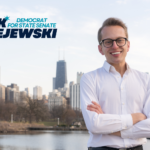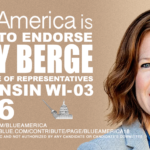We are living in time of awakenings. The breadth of multi-racial support for Black Lives Matter was the clearest example this year, following the youth-led shift in gun politics and climate activism in the years before. None have reached political fruition, but all have dramatically changed the conversation, fundamentally altering guiding assumptions, so that looking backwards just a moment ago, in historical terms, it seems as if we, as a culture, had been locked in a Rip Van Winkle-style sleep. And we seem to be nearing a similar shift when it comes to the Supreme Court, as once-radical ideas about court-restructuring are widely being discussed.
But closely related to that is another long-overdue awakening: to the awareness of the pro-choice religious community, a hidden majority opposed to the key motivational engine that’s used to establish minority control over the Supreme Court. As shown in the graphic below, based on the 2014 Pew Religious Landscape Study, there are “prochoice majorities or near majorities in every category measured—except for evangelicals and Mormons, which also have significant prochoice minorities.” That’s a key point made by Frederick Clarkson, Senior Research Analyst at Political Research Associates, in just-published paper, “The Prochoice Religious Community May Be the Future of Reproductive Rights, Access, and Justice”.

Clarkson’s paper is part of package that includes a "Directory of Prochoice Religious Organizations in the United States," along with the proceedings of an online colloquium organized by Political Research Associates, and response papers by researcher Rachel Tabachnick, and Patti Miller, author of Good Catholics: The Battle Over Abortion in the Catholic Church. It's not just a passive assessment of a possibility. It's actively planting the seeds for what could come.
I wrote about Clarkson’s paper and the colloquium for Salon in June, the month after it was held, and the week after Trump’s invasion of St. John’s Church for his up-side-down Bible photo-op. I noted Trump’s blasphemy and the pushback it received. I then wrote:
But as McKay Coppins writes at The Atlantic, "most white conservative Christians don't want piety from this president; they want power." In particular, they want the power of his judicial appointments, with the goal of overturning Roe v. Wade, writing their minority views into law for generations to come, even as their share of the population (though not the electorate) plummets.”
As Clarkson’s report shows, support for legal abortion is at a 25-year high, while, as I went on to note, “the main voting bloc opposed to legal abortion — white evangelical Protestants — is shrinking as a share of the population, even as it holds steady as a share of the electorate:”

There could not be a more clear-cut example of anti-democratic minority rule than the multi-decade process of eroding abortion access, with ultimate goal of overturning Roe v. Wade
Now, with Trump’s appointment of Amy Coney Barrett to replace Ruth Bader Ginsberg, that once-distant goal seems easily within reach. And the disconnect of minority power shown in the above chart lies at the very heart of the larger phenomena of minority rule that pervades America today—not just in the minority-rule packing of the Court by a electoral vote loser and a Senate majority representing a minority of voters, but the gerrymandering of Congress and state legislatures, the proliferation of voter-suppression laws and practices, and more.
While it’s true that a majority of Americans are pro-choice and support Roe v. Wade, it’s generally assumed that the anti-choice side has “all the religion”, setting up a framework of moral “values voters” vs. a secular, immoral mob. At least that’s how the religious right would frame it. But the mainstream media isn’t all that different—and even Democrats themselves often seem to have internalized this view. In a just-published article at Religion Dispatches introducing his work, Clarkson notes that at the Democratic National Convention, “there was nothing from an explicitly prochoice religious perspective,” indeed:
Fr. James Martin, a liberal Jesuit priest, closed the convention with a prayer in which he asked God to “Open our hearts to those most in need.” On his list was “The unborn child in the womb.”
This was hardly an isolated incident. Clarkson says, “While the GOP has sought to solidify its base, the Democrats chase antiabortion religious voters on the margins, and both parties ignore the vast prochoice religious community in the United States.” The fact that so many religious Americans are pro-choice is something that needs far more recognition—and more than that, activation:
There is a vast prochoice religious community in the United States that could provide the moral, cultural, and political clout to reverse current antiabortion policy trends in the United States…. Taken together, they have vast resources, institutional capacity, historic and central roles in many towns and cities, and cadres of well-educated leaders at every level—from national denominational offices to local congregational leaders, current and retired.
The mere existence of this community isn’t enough, obviously. "The Power Is Not in the Polls; It’s in the Organizing" Clarkson argues in one section of his paper, and the key to organizing can be found in "The Parachurch View."“To politically empower itself, the prochoice religious community needs to create organizations outside of traditional religious institutions,” just as the Christian Right has done:
Parachurch ministries within modern evangelicalism helped make what we now know as the Christian Right possible, and there are lessons to be learned from them. These are trans-denominational organizations with a religious mission that operate outside of, but not necessarily in conflict with, and often in cooperation with denominations….
Parachurch organizations evangelized, recruited, and trained people in theologies, skills, and ecumenical organizing activities that denominations could or would not. They paved the way for the more aggressive political operations that have emerged, matured, and gained real political power in recent decades.
There are multiple reasons why progressives can’t and shouldn’t want to simply copy rightwing parachurch organizing. As Clarkson writes, “the multi-faith and multiracial nature of the prochoice community makes organizing generally more complicated than for the Christian Right.” But we can and should take a similar approach that’s compatible with our democratic, egalitarian values and much more diverse faith foundations:
A prospective Religious Left, or sectors of a Religious Left with unambiguous views on reproductive rights, access, and justice, need not ape the structure and methods of the Christian Right—although it could probably take some lessons from it.48 Whatever organizations it might develop would need to be consistent with its own values in its organization and methods.
There’s even a good fledgling example Clarkson cites:
The multi-faith, multiracial Poor People’s Campaign led by Rev. Dr. William J. Barber II and Rev. Dr. Liz Theoharis, has the stirrings of a possible political movement outside of traditional religious denominations….
There may be much to be learned from this initiative even though reproductive rights, access, and justice are not a formal focus. Instead (as discussed below), the Campaign argues that the Christian Right and the antiabortion movement use the issue to mask a racial and economic agenda that they say is inconsistent with Christian teaching and is undermining democracy.
For the reasons cited above, “creating one big national organization may be an unworkable goal, at least in the near term,” Clarkson writes:
A more promising series of possibilities would be the creation of trans-denominational groups as state, local, or regional entities—at least as pilot projects to figure out what works and what doesn’t. Although such groups would be separate, they would all need to have some common understandings about their mission at the outset. They would need to be dedicated to finding people who share a vision of creating a politically strong prochoice religious community.
They could range from being specific to one faith tradition, such as Roman Catholicism, to being ecumenical or multi-faith. They could take diverse ideological approaches: “some may be more oriented to a choice point of view, others with a justice point of view,” and they could be multi-issue, “in the manner of what Religious Left organizations might be like if reproductive choice, access, and justice were part of the agenda.” There is no one right approach, he argues. “All should be considered, encouraged, supported, and understood to be part of a greater whole with a common mission.”
One important option I stressed in my Salon story was the reproductive justice framework, “defined by the group SisterSong as 'the human right to maintain personal bodily autonomy, have children, not have children, and parent the children we have in safe and sustainable communities.'" As I wrote:
This definition resonates with the comments of a CCS client who had chosen to have an abortion, interviewed by Gillian Frank and quoted in Frederickson's report:
Later I had two healthy beautiful children and a marriage that's been excellent, and I always felt that this fetus was a potential life, but I had, every month, the potential for life. And if I had gone forward with that pregnancy, the children I have now would not have come to be. And so this was a choice that I needed and deserved.
All the above applies to what are basically issue-oriented groups. A second kind of parachurch organization is specifically political, “organizations, whether state, regional, or national, that are able to develop an electoral constituency not only as a voter base but also as a permanent source of skilled political workers, candidates, and officeholders.” This, in turn requires a third kind: “a clearinghouse, and a strategy and training center, to create or to point people to appropriate resources and to conduct ongoing organizer, campaign, and candidate schools.”
There’s another way of thinking about parachurch organizations, as I described in my Salon story:
Another way of understanding parachurch organizations came from researcher Rachel Tabachnick in a response paper. She introduced a simplified organizational structure tree describing how they function: "First, the branches of the tree represent the deliverable products and services.... policy guidelines, education, media, get-out-the-vote efforts, etc." Second, "The trunk of the tree represents the tangible resources," which she describes in shorthand as "Fixers, Funders and Fellows." The fixers are the architects who create the organizations. Third are the roots, the intangible resources: "These are often the least visible assets, but they are the foundations on which the rest of the organization depends. These include knowledge, vision, values and ideas."
All this may sound extremely ambitious. And it certainly is. But this is about organizing an already-existing majority view, which, by definition, makes this a much easier task than more historic struggles of the past, for the abolition of slavery, for women’s right to vote, for LGBTQ rights, etc. The hardest part may well be just getting started—getting people to take the work seriously, and committing to it. The failure to do that is how we’ve gotten here in the first place—just weeks away from a possible deciding vote being placed on the Supreme Court to strike down Roe v. Wade. If ever the words “Don’t mourn, organize” had meaning, now is the time. And this is the shape and scope of the organizing needed.




















